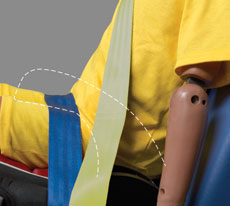IIHS conducted booster seat evaluations from 2008 to 2024.
Boosters are important safety devices for children who have outgrown child restraints with built-in harnesses. The purpose of a booster seat is to improve the fit of a seat belt designed for adults so that it is properly positioned to protect a child in a crash.
While belt fit varies depending on the specific vehicle and the individual child, IIHS booster ratings were developed to take the guesswork out of finding boosters likely to provide good fit for typical 4- to 8-year-olds in a range of vehicles.
By the time the ratings were discontinued, the majority of boosters on the market earned the highest rating of BEST BET.

Although IIHS no longer conducts booster ratings, there are other sources of information available. Consumer Reports booster ratings are available for free. In addition to belt fit, these ratings take into account ease of use and other factors.
Information about recalls of boosters and other child seats is available on the National Highway Traffic Safety Administration’s website.
Always check for proper fit
No matter what booster you purchase, make sure the seat belt fits your child correctly in whatever vehicle they ride in.
Lap belt fit — The lap belt should lie flat and on top of the thighs, not higher up on the abdomen.

outline = arm rest removed to show belt position

outline = arm rest removed to show belt position
Shoulder belt fit — The shoulder belt should fit snugly across the middle of the child’s shoulder. If it falls off the shoulder or rests on your child’s neck, it won’t work as well. An improper fit could encourage your child to move the belt to a dangerous position, such as behind the back or under the arm.


